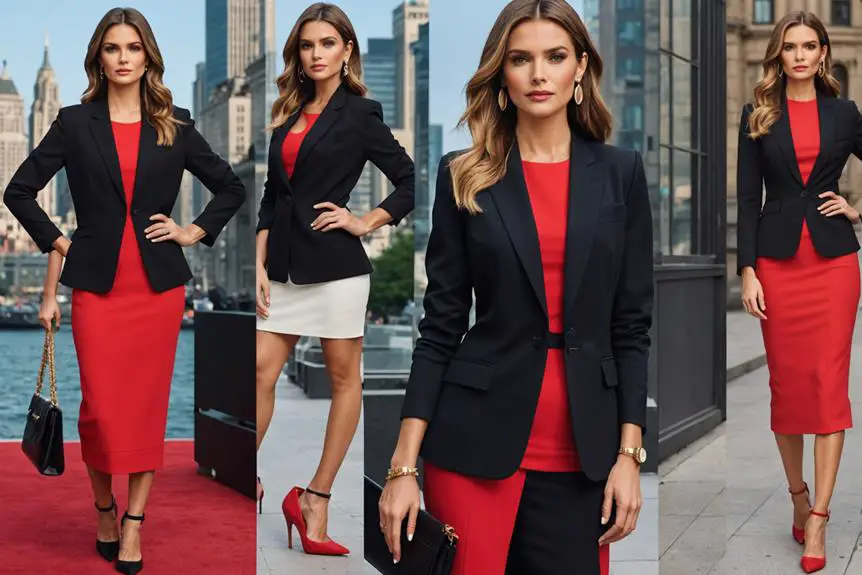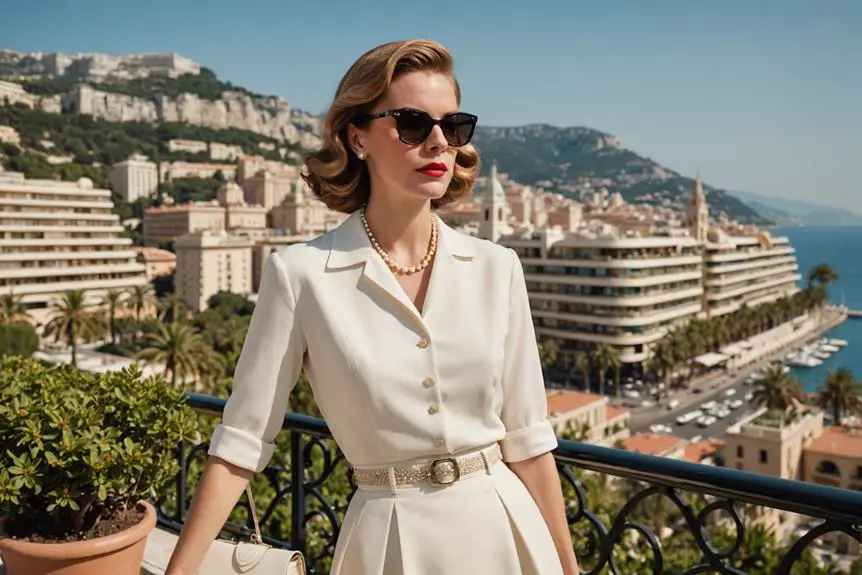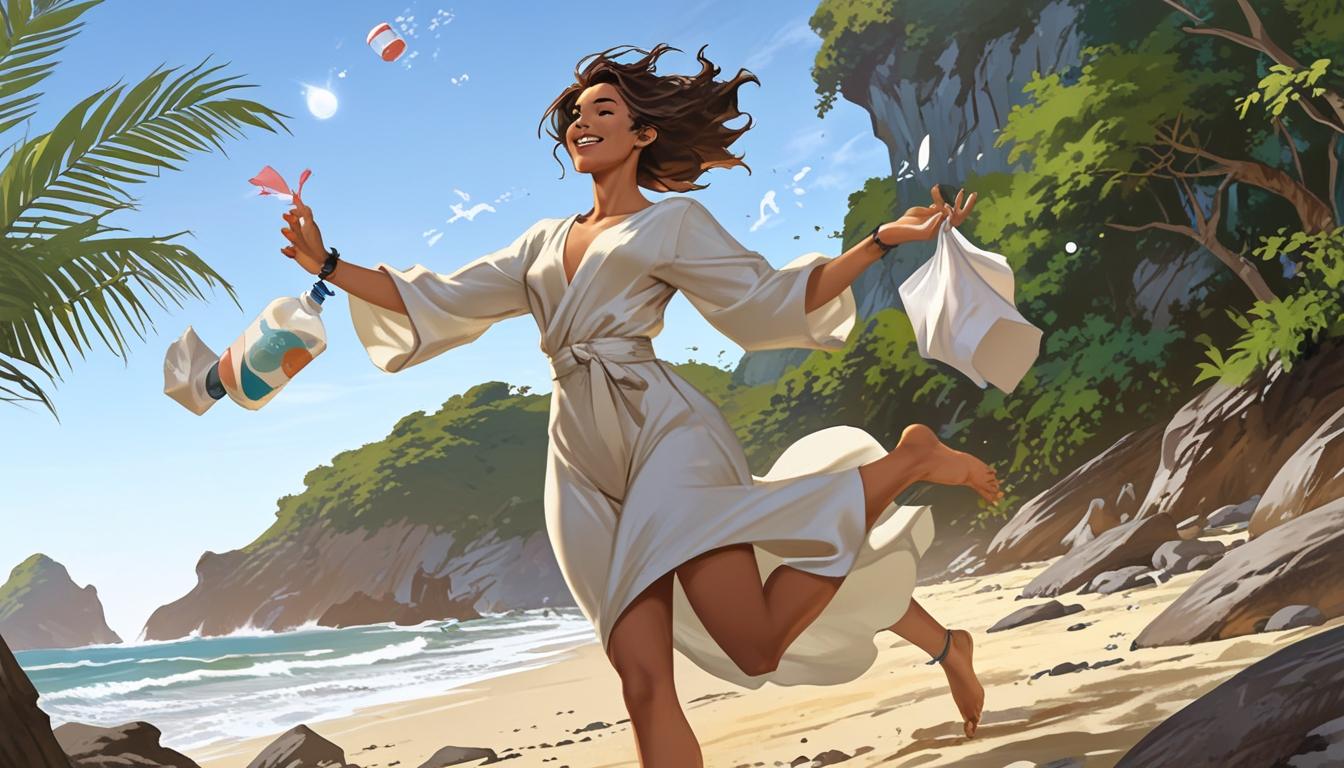When you look at the outfits from The Face TV Show, it's clear they're more than just fabric; they're a reflection of each contestant's journey. You might notice how the styles evolve season by season, capturing everything from bold glamour to subtle sophistication. As contestants navigate challenges, their choices often reveal deeper themes of personal growth and emotional resilience. But what happens when the pressure mounts, and fashion becomes a pivotal part of the competition? The answers might surprise you as you explore the interplay between style and success in this unique environment.
Overview of Contestant Outfits
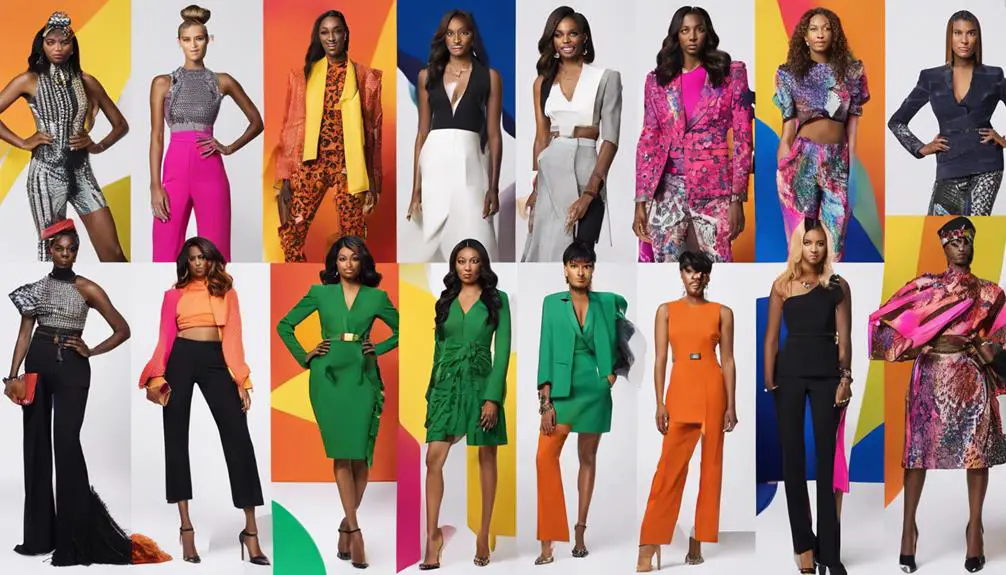
Throughout the seasons of The Face, contestants sported a diverse range of outfits that truly showcased their unique styles and the themes set by their mentors. Each episode brought fresh challenges, requiring models to wear outfits that reflected their assigned themes, like Naomi Campbell's focus on dramatic glamour or Erin's emphasis on dark romance. As you watched, you could see how these outfits weren't just clothes; they were extensions of the models' personalities and the visions of the three supermodel mentors guiding them.
The high-fashion elements and accessories were essential in enhancing their looks, making every catwalk moment an opportunity for the contestants to shine. You would often find yourself captivated by the intricate designs, from corsets to elaborate hats, which pushed contestants to adapt quickly and perform under pressure. This blend of creativity and skill was at the heart of the show, as each outfit was evaluated not only for its aesthetic appeal but also for how well it embodied the modeling techniques taught during masterclasses.
Emotional responses to their outfits were common, with contestants experiencing moments of insecurity or bursts of confidence based on their mentors' feedback. These reactions added depth to the competition, reminding you that fashion is as much about personal expression as it is about style. Ultimately, the outfits worn on The Face weren't just statements of fashion; they were significant to the contestants' journeys, reflecting their growth and aspirations in the competitive world of modeling.
Themes and Styles in Fashion
Fashion on The Face isn't just about the clothes; it's a vivid canvas where distinct themes and styles come to life, shaping the contestants' journeys. Each team embraced a unique aesthetic, showcasing Naomi's dramatic glamour, Erin's dark romance, and Caroline's decadent daydreams. This diversity in themes not only highlighted the fashion evolution within the industry but also emphasized the cultural influences that inspire contemporary styling.
As contestants navigated through various challenges, they learned to merge their personal expression with the assigned themes. Wearing elaborate outfits, like corsets and Philip Treacy hats, tested their ability to maintain comfort while exuding confidence and style. The emotional weight of their outfit choices became evident, as many felt the pressure to embody their themes authentically, while still staying true to their individuality.
Throughout the competition, the importance of signature walks and poise was underscored during Erin's masterclass, where contestants drew inspiration from iconic models like Gisele Bündchen and Kate Moss. This focus on technique not only honed their skills but also allowed them to adapt and grow in a highly competitive environment.
Ultimately, the emphasis on collaboration among teams showcased a myriad of approaches to fashion styling, reinforcing the idea that personal expression can thrive even within structured themes. The transformative experience on The Face illuminated the contestants' paths, highlighting how they can blend creativity and industry standards to carve out their unique places in the world of fashion.
Iconic Catwalk Moments
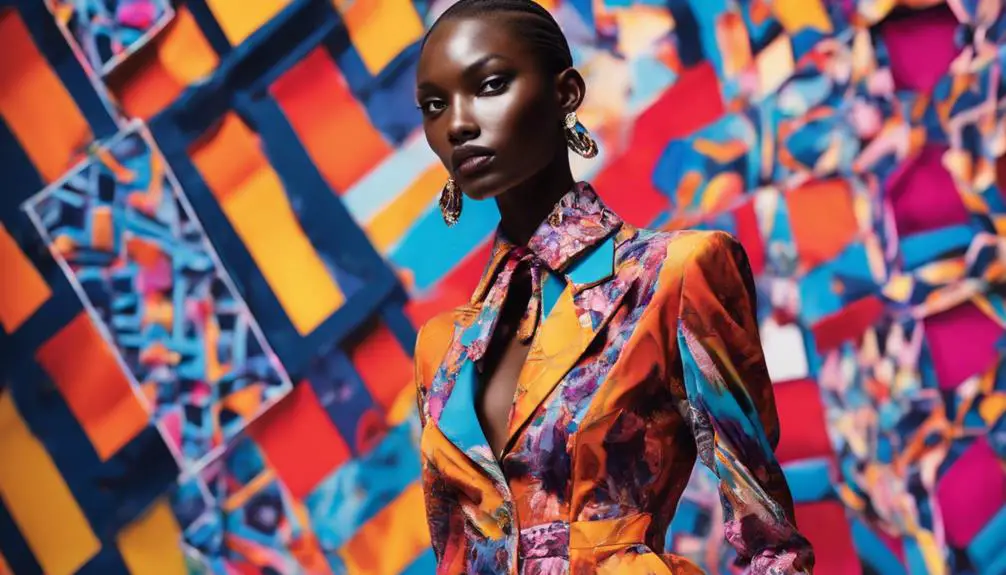
Capturing the essence of The Face, iconic catwalk moments became defining highlights of the competition, showcasing the contestants' growth and flair. Each runway show brought a unique dress theme that played a significant role in elevating the performances. Naomi Campbell's team dazzled with dramatic glamour, while Erin O'Connor's contestants embodied dark romance. Caroline Winburn's group embraced decadent daydreams, creating a tapestry of styles that kept viewers captivated.
As you watched, you could feel the emotional performances unfold, with contestants channeling their inner divas during Erin's masterclass, where they learned to master catwalk techniques. You saw them draw inspiration from the likes of Gisele and Kate Moss, aiming to achieve that elusive catwalk confidence. The addition of unique runway features, like a spinning disk at the end of the catwalk, added a thrilling challenge for these novice models, testing their poise and skill.
Among the memorable highlights, Nadine stood out, showcasing her inner diva with a performance that left a lasting impression on both judges and viewers. However, not every contestant found it easy to shine; insecurities loomed, particularly for models like Chloe, who faced the pressure of performing in elaborate outfits. These moments of triumph and vulnerability created a dynamic atmosphere that defined the series, illustrating the emotional ups and downs of each contestant's journey. The catwalk became a stage for growth, making every step an unforgettable experience.
Influence of Coaching on Fashion
The impact of coaching on fashion choices in The Face is undeniable. The guidance from supermodels like Naomi Campbell, Erin O'Connor, and Caroline Winburn plays a pivotal role in shaping contestants' styles. Through personalized mentorship and thematic challenges, you witness how mentor feedback loops create a dynamic learning environment. For instance, when assigned to embody Naomi's dramatic glamour, you're encouraged to experiment with bold colors and striking silhouettes, fostering your signature style evolution.
As you navigate the competition, emotional styling choices come into play, influenced by both the pressure of the catwalk and the encouragement from your mentors. Each critique and suggestion helps you refine your wardrobe selections, pushing you to adapt swiftly to meet judges' expectations. This real-time feedback allows you to grow as a fashionista, transforming your initial ideas into polished presentations.
The importance of poise and confidence is emphasized throughout your training sessions. Inspired by iconic supermodels like Giselle and Kate Moss, you learn to channel your inner diva, adopting techniques that elevate your presence on stage. The thematic guidance from coaches not only defines your look but also helps you connect with your teammates, fostering a supportive atmosphere that enhances your overall fashion identity.
In this vibrant environment, you find that coaching doesn't just influence what you wear; it cultivates a deeper understanding of who you are in the fashion world, enabling you to shine brightly amidst the competition.
Impact of Fashion on Competition
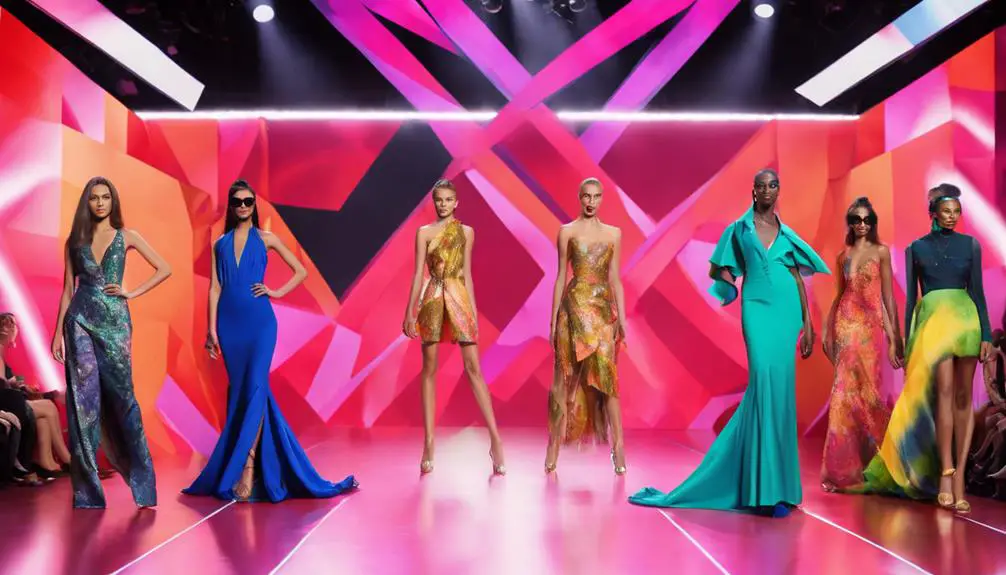
Outfits play an essential role in shaping the dynamics of competition on The Face. When you step onto the runway, your fashion choices aren't just about looking good; they're a reflection of your ability to connect with the audience and judges on an emotional level. Fashion psychology comes into play here, as each outfit can evoke specific feelings and perceptions. For example, Naomi's team may emphasize dramatic glamour, while Caroline's focus on decadent daydreams creates distinct vibes, influencing how judges perceive your performance. Understanding the importance of vintage clothing identification can also enhance your style choices, allowing you to stand out in an impactful way.
Every styling challenge presents an opportunity to showcase your adaptability, whether you're mastering the art of accessorizing or embodying a particular theme. The emotional stakes are high, and your confidence can fluctuate based on how well you execute these fashion concepts. It's fascinating how a well-chosen outfit during a photo shoot for ID magazine can propel your chances of advancement, shaping the judges' impressions considerably.
Moreover, the masterclasses led by mentors like Erin O'Connor underscore the importance of understanding fashion fundamentals. This knowledge helps you navigate the complexities of high-stakes modeling, allowing you to tackle styling challenges effectively. Ultimately, your outfits become a powerful tool for emotional expression, and they can make or break your journey in this competitive arena. So, embrace every opportunity to elevate your style, and remember, in the world of The Face, your fashion choices are as vital as your modeling skills!
Legacy of The Face Outfits
There's no denying that the legacy of outfits from The Face has left a significant mark on the fashion industry and modeling competitions. The show's influence extends beyond mere aesthetics; it has spurred a fashion evolution that emphasizes the importance of styling techniques and wardrobe curation in modeling. Each season, the curated wardrobes reflected the distinct aesthetics of the supermodel coaches, showcasing everything from dramatic glamour to dark romance, which played a key role in contestants' performances and public perceptions. This emphasis on tailoring techniques for tops and bottoms allowed contestants to adapt their outfits, ensuring a perfect fit that complemented their unique styles.
When you think about the iconic looks featured, it's clear they weren't just about the clothes; they allowed contestants to express their individuality and creativity within the competitive framework. This emphasis on outfit selection transformed how audiences and judges view modeling, highlighting that fashion is as much about personal style as it is about the garments themselves. The Face set a precedent, inspiring future modeling competitions to prioritize fashion-forward styling as an essential part of contestant evaluation.
Moreover, the show's unique approach to wardrobe curation has encouraged aspiring models to sharpen their own styling techniques, understanding that their outfits can make or break their chances in the industry. Ultimately, the legacy of The Face outfits continues to influence aspiring models and fashion creatives, pushing them to embrace innovative styles and express their personalities through fashion. So, if you've ever dreamed of walking the runway, remember that the outfits you choose can tell a powerful story—one that resonates with your audience and shapes your modeling journey.
Frequently Asked Questions
Who Created the Face?
You might not know that "The Face" was created by Shine America. Its influence on fashion trends and iconic covers set a new standard in modeling, showcasing the fierce competition between models and their supermodel coaches.
Is the Face Still a Magazine?
No, "The Face" isn't a magazine. With digital transformation reshaping fashion journalism, media evolution has led to more dynamic formats like reality TV, moving beyond traditional print to engage audiences in innovative ways.
Who Designed the Face Magazine?
In the domain of fashion influences, Neville Brody designed The Face magazine, shaping its editorial style with bold typography and stunning imagery. His work left a lasting cultural impact, redefining how magazines engage with youth culture.
